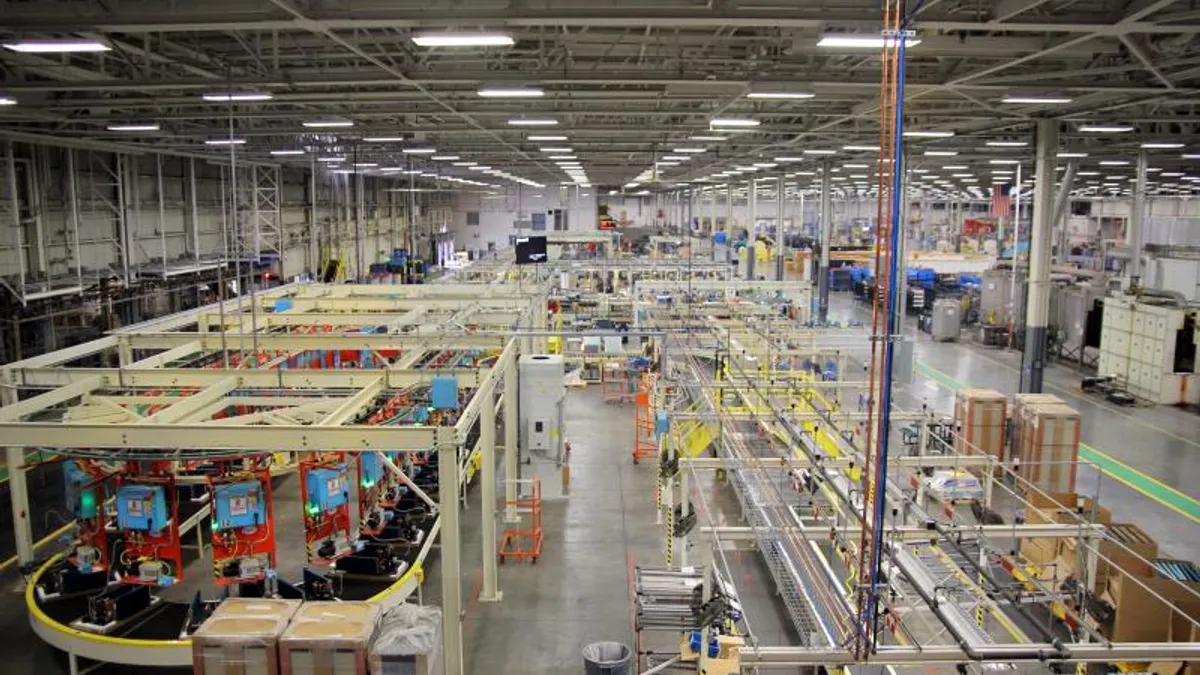HOUSTON — GE was blindsided when President Donald Trump's tariffs on Chinese imports started to hit items in its supply chain. In fact, executives at the company didn't believe it was happening at first.
"Initially, [there was] a lot of shock," Rich Wrightington, executive director of sourcing at GE Appliances, said at the Institute for Supply Management (ISM) conference in Houston Monday. "And certainly a lot of denial: 'This isn’t real. He’s never going to do it. It’s too big.'" They specifically doubted Trump would decide to put steel tariffs on Canada and Mexico, two of the United States' closest trading partners.
The Trump administration has released three lists of Section 301 tariffs, and all three affect GE. List 1 affects more than 1,000 parts and more than 60 GE suppliers. List 2 affects more than 400 parts and more than 50 suppliers. But the biggest hit came from List 3, which covered more than 3,800 parts and more than 200 suppliers in GE's supply chain.
Before these went into place, GE's CEO estimated they could cost the company between $300 million and $400 million, according to Reuters. In May 2018, the company testified before the Office of the United States Trade Representative, lobbying for several exclusions to the tariffs.
GE didn't begin feeling the impacts of the tariffs until the third or fourth quarter of last year when the effects started to show up in the books — and in a big way. Wrightington said some people in the company didn't think the tariffs would actually stay in place. Eventually, though, they moved through all of the stages of grief. By the time they reached acceptance, GE had already missed its operations cost target by millions.
"By the end of the third quarter and I'm missing my ops plan by $30 million and people actually start listening," Wrightington said.
Tariffs are still hitting GE's bottom line, according to executives on GE's March earnings call. But, over time the company has found ways to lower the costs associated with tariffs. To reach this point, the company has taken a number of different routes. Here is a look at eight that were highlighted by Wrightington.
-
Reclassification
-
Engineering changes
-
Buy ahead
-
Tariff share
-
Location moves
-
New supplier
-
Insourcing
-
First sale
All products have a specific classification that places them in a certain tariff bucket. One way to avoid paying the tariffs on a particular item is reclassifying it as something that doesn't incur these tariff costs. The downside is you might find something that should actually be classified as an item subject to tariffs, which did happen to GE, Wrightington said.
What changes can you make to your product to avoid tariffs? This requires finding parts that are not on the tariff list to replace parts that are on the list. If heaters are subject to tariffs then can you use a burner instead? This can be a big undertaking from the engineering teams who have to rework the product design.
It's no secret this is the strategy many companies used as tariffs went into place since the pull-forward effect has been evident at U.S. ports for months. But it's more complicated than it might sound, Wrightington said. "For us, it brought a lot of accounting challenges, to be honest," he said. Trying to give the leadership an estimate of cost for the quarter can be extremely difficult.
If a company is large enough, it can potentially use its buying power to negotiate with the supplier and ask the supplier to help pay the tariff cost. GE approached its suppliers with an offer: "If you want to keep doing business with us, you're going to have to share [the tariff cost]," he said. Wrightington met with about 30 different suppliers in China the week before Christmas to present them with this offer and "it was actually pretty effective," he said. Some suppliers, however, will be unwilling to do this if they know they're the best deal and don't have any competition.
If a supplier has factories in multiple locations then it is sometimes possible to move to a location outside of China that can produce an identical design.
There are opportunities to find new suppliers. "Eastern Europe and Southeast Asia are certainly great places to look," Wrightington said. GE has not found any opportunities to move things back to the U.S., he said.
GE has looked for opportunities to do some things itself that were previously outsourced. This includes the assembly of items that it can do in its own factories.
Tariffs only apply to the cost of a good. Companies that use a broker to buy from Asia might be overpaying, he said. "If your broker is buying a part for $80 and they're selling it to you for $100 then you only have to pay duty on $80," he said. Finding a broker willing to be this transparent can be difficult, so if a company has enough business to make it worthwhile then it can set up a third party broker itself. This is a complicated process involving a lot of paperwork that can take months to complete, he said.
GE is still not back to where it was before tariffs. The costs are about 20% lower now than when they were first put in place, Wrightington told Supply Chain Dive. And there are some areas where the company simply hasn't found a way around the increased cost.
"There's certainly some cases where China is still the lowest cost, even when you add 25% and there's just not industry available, so in those cases ... [we just] have to pay more," he said.














